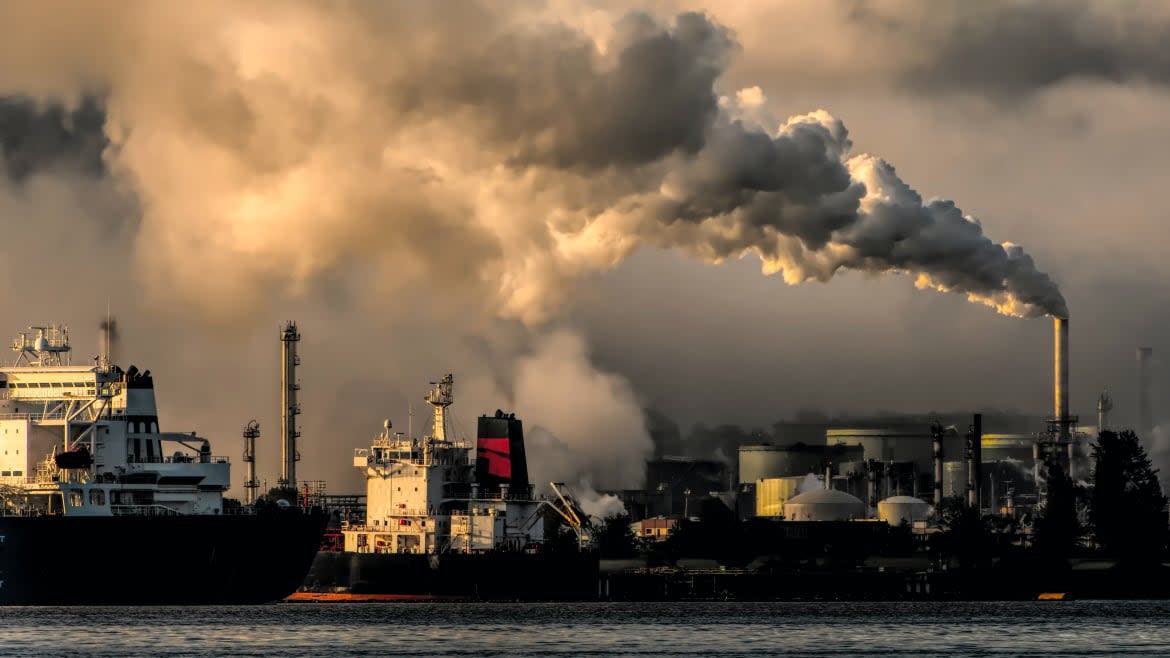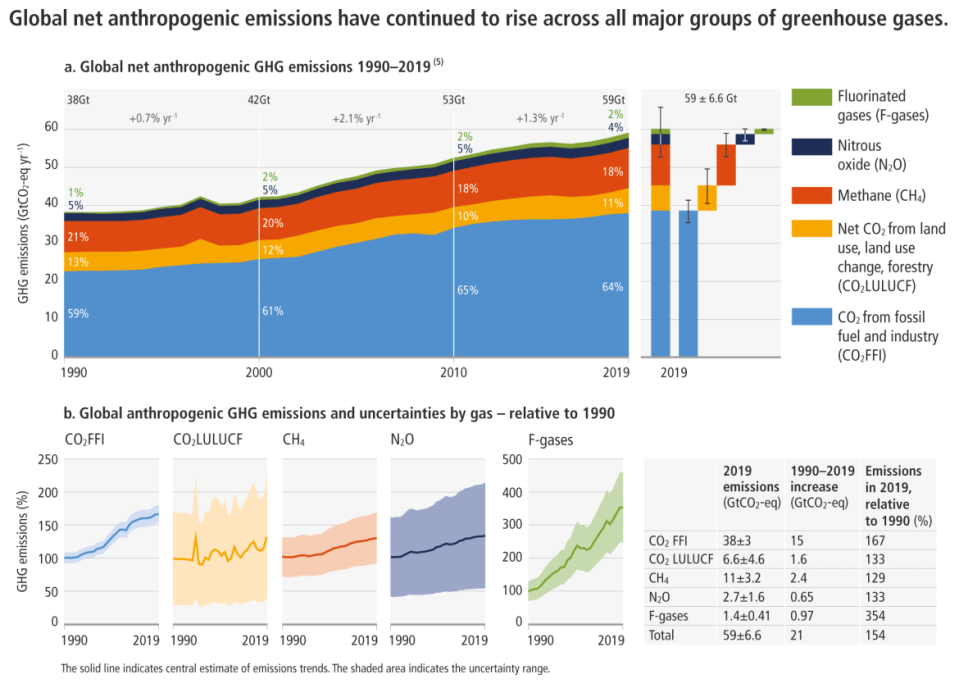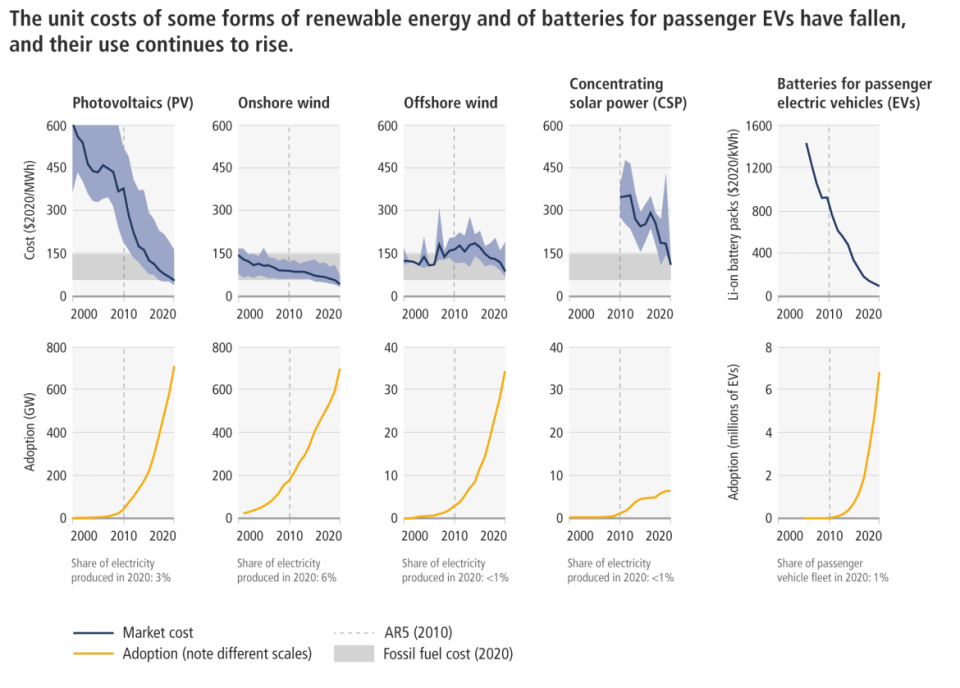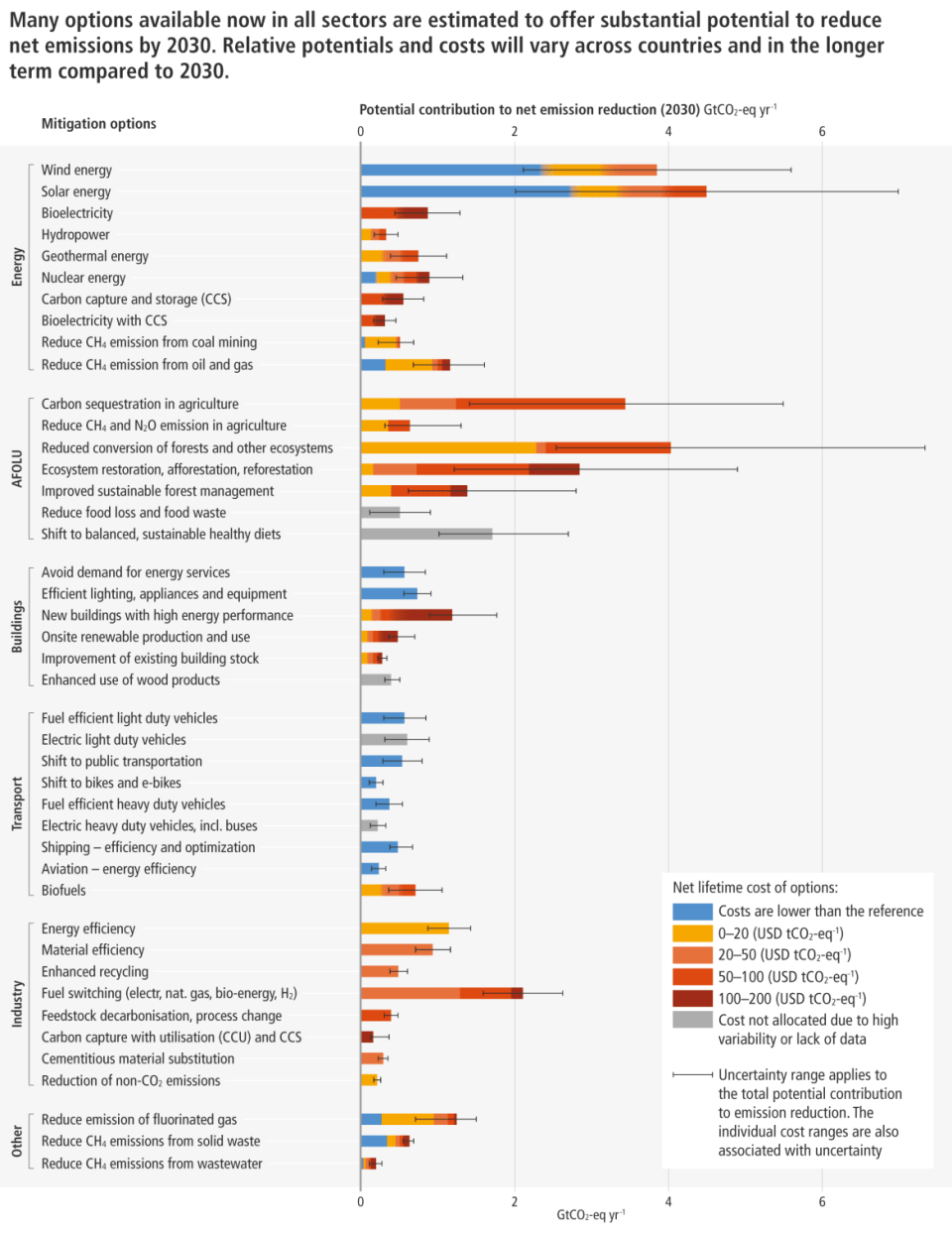The UN’s Latest Climate Report Is a Final Warning for Action

- Oops!Something went wrong.Please try again later.
The United Nations’ Intergovernmental Panel on Climate Change (IPCC) released a new report on Monday to outline strategies for reducing greenhouse gas emissions and slowing the rate of global warming.
Like its predecessors, the latest IPCC report is chock full of alarming news, and tempered by optimism that there are solutions in our grasp to save the world from the worst climate change scenarios—if we have the willpower.
“It’s now or never, if we want to limit global warming to 1.5°C,” IPCC co-chair Jim Skea said in a statement. “Without immediate and deep emissions reductions across all sectors, it will be impossible.”
The report is premised around keeping global temperatures from rising more than 1.5 degrees Celsius. To achieve this goal, the authors came up with a model that allows greenhouse gas emissions to peak by 2025 and be cut by 43 percent by 2030. The ultimate goal is to reach net zero carbon dioxide emissions by the early 2050s to prevent a 1.5-degree Celsius increase.
So far, the world is far from on track to meeting this goal.
António Guterres, the secretary general for the UN, pointed out that current climate pledges around the world will still mean a 45 percent increase in emissions.
“The jury has reached a verdict, and it is damning,” Guterres told reporters Monday. “We are on a fast track to climate disaster,” he added, citing rising sea levels, the extinction of one million species, and worsened storms and floods as just a few of the negative effects we can expect. “This is not fiction or exaggeration, it is what science tells us will happen.”
Here’s what you need to know.

Cities Will Be Climate Change Battlegrounds
Cities are a huge contributor to climate change, and “an increasing share of emissions can be attributed to urban areas,” the IPCC authors wrote. Over half the world’s population lives in urban areas—a number expected to swell to over 70 percent by 2050. The rise of cities will only make climate change worse—but they are also a prime target for limiting greenhouse gas emissions.
Solutions, wrote the authors, must include reducing or changing urban energy and resource consumption; electrification; and improving carbon capture and storage in urban environments by expanding the use of biomaterials and permeable surfaces, and creating more green roofs and green spaces. Cities will need to work tightly with neighboring jurisdictions to make the most of these strategies.
One big thing to look for moving forward is retrofitting buildings with new materials so they expel less carbon dioxide. “In 2019, global direct and indirect emissions from non-residential buildings increased by about 55 percent and those from residential buildings increased by about 50 percent compared to 1990,” the new report states. We could see a huge decrease in emissions by retrofitting buildings in developed countries as well as the construction of new buildings in the developing world with better materials.
Climate Innovation Is Getting Cheaper
From 2010–2019, the cost of solar energy plummeted by 85 percent, wind energy by 55 percent, and lithium-ion batteries (like those used in electric vehicles) by 85 percent. Across the globe, we’ve seen solar energy adoption expand 10 times over, and EVs expand over 100 times over. In addition, we’re also seeing a larger expansion of emerging green technologies like smart grids, biofuels, hydrogen-based energy, and other renewables. There are fewer and fewer reasons for most of the world to ignore the adoption of renewable energies.
Adoption of low-emission technologies still lags in most developing countries. But a combination of decreased technology costs along with financial strategies that make these solutions more accessible could go a long way to enabling more large-scale adoption.

The Transportation Sector Is Still Critical
There isn’t much to say here that hasn’t already been said before: Saving the world from climate disaster will require overhauling transportation around the globe. “In scenarios that limit warming to 1.5 degrees Celsius,” wrote the IPCC authors, “global transport-related carbon dioxide emissions fall by 59 percent” by 2050.
They key to getting there? Electrified planes, trains, and automobiles. Along with solar and wind, electric transportation could be one of the cheapest ways to reduce greenhouse gas emissions.
Taking Better Care of the Land
On the flip side, one of the most expensive ways to solve climate change will be coming up with new strategies related to agriculture, forestry, and other land use (AFOLU). But this sector is essential to keeping us from careening off the 1.5 degree Celsius cliff, because so much carbon ends up in the air when natural lands and forests are destroyed. So we need to reduce deforestation and restore natural ecosystems to robust health; improve land management and agricultural practices (soils are a huge reservoir for sequestering carbon as well); deploy natural carbon-reducing solutions like biochar in many more areas; promote healthier and more sustainable diets (like fake meats and other plant-based foods); and use more biomaterials that create less negative impact on the land.

Digital Tech Can Get More People On Board
Surprisingly, the IPCC report was bullish about how new kinds of sensors, robotics, smart devices, AI-powered software, and other digital tools can help increase energy efficiency and make the adoption of low-emission solutions more seamless. The ability to leverage an app could, say, optimize the tilling of the soil or limit electricity overuse, helping reduce carbon emissions with less effort.
Carbon Capture and Carbon Removal Have Enormous Potential—and Nebulous Futures
It wasn’t that long ago that many scientists were thumbing their nose at the prospect of capturing carbon before it’s released into the air, or directly removing it from the atmosphere itself. The fear was that these actions, even if they could be deployed without breaking the bank, would just encourage people to continue using fossil fuels.
But nowadays, even the IPCC is clear-eyed about the necessity of these strategies if we’re going to stave off disaster. “The deployment of [carbon removal] to counterbalance hard-to-abate residual emissions is unavoidable if net zero carbon dioxide or greenhouse gas emissions are to be achieved,” the IPCC authors wrote. We need a stopgap measure to help us out while we wean ourselves off of fossil fuels.
The problem is that these strategies are still largely in their infancy, and not exactly affordable. Moreover, scientists are still debating how exactly to store all of that collected carbon dioxide.
What if We Captured Carbon From the Air and Made Energy?
Not Just Carbon Dioxide
Don’t forget about the other greenhouse gases that are contributing to global warming. Carbon dioxide is a major contributor, but methane is 25 times worse in trapping heat. It continues to find its way into the atmosphere thanks to our reliance on natural gas and the warming of the polar caps. Nitrous oxide accumulates in the atmosphere thanks to a slew of different human activities, especially agriculture and deforestation. This century’s climate mitigation strategies will need to encompass all greenhouse gases, not just carbon dioxide.
Get the Daily Beast's biggest scoops and scandals delivered right to your inbox. Sign up now.
Stay informed and gain unlimited access to the Daily Beast's unmatched reporting. Subscribe now.

